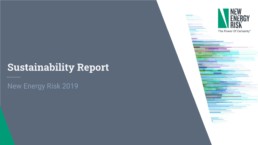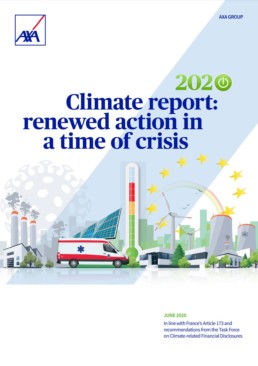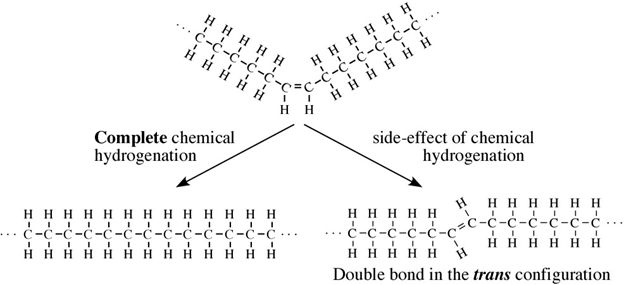NER Releases its 2019 Sustainability Report
New Energy Risk helps mitigate technology risk for innovators addressing global challenges in energy, pollution, and decarbonization. To date, over $2B of project capital has been deployed to scale and commercialize technologies via our proven platform that supports innovation.
We are proud of our clients, who are committed to solving some of the world's most pressing environmental issues. Collectively, they are reducing landfills and building a circular economy, reducing dependence on aging centralized power grids, reducing transportation’s dependence on petroleum, and preventing harmful greenhouse gas emissions.
View New Energy Risk's representative client impact today:
https://newenergyrisk.com/ner-sustainability-report-2019/
Want to learn more about our contribution to sustainability efforts? Read our affiliate AXA's Climate Report and find New Energy Risk on page 45.
AXA Publishes its 2020 Climate Report
We are proud to be featured on page 45 of AXA's 2020 Climate Report, recognizing our work with clients addressing some of the greatest environmental challenges facing the world today.
Below is AXA's original press release. Peruse to learn more about the important initiatives of our affiliates.
AXA Publishes its 2020 Climate Report
AXA announced the publication of its 4th Climate Report. This document describes AXA's responsible investment and insurance initiatives in the fight against climate change and measures the Group's progress in implementing the objectives of the Paris Agreement by 2050.
This report meets both a legal obligation established by the French law on energy transition for green and ecological growth, and the approach of the Taskforce on Climate-related Financial Disclosures (TCFD) that AXA has supported since its creation. The report's main indicator, the "warming potential," measures the impact of the Group's investments on global warming and its contribution to the fight against climate change.
At the end of 2019, AXA's "warming potential" was 2.8°C, down compared to 2018 (3°C) and below the market average (3.6°C). This evolution notably reflects the ambitious policy implemented by AXA to align its investments with the objectives of the Paris Agreement by 2050.
"AXA has been a pioneer in taking ambitious measures to combat climate change. Our Climate Report is an essential tool for measuring the effectiveness of the strategy we have implemented. It also shows that we must collectively pursue our efforts to achieve the objectives of the Paris Agreement, notably in the context of the post-Covid 19 economic recovery." Thomas Buberl, CEO of AXA
"We witness the ground-breaking engagement of AXA in addressing the risks of unabated global climate change. AXA has been in the front of global efforts for years, going beyond thought leadership into corporate action leadership." Christiana Figueres, Founding Partner, Global Optimism & Former Executive Secretary, UN Climate Change Convention (UNFCCC)
This 2020 Climate Report is available on AXA’s website at the following address: https://www.axa.com/en/press/publications/2020-climate-report
Getting the Kinks Out
The End of Partially Hydrogenated Oils
By Shawn Lee, Scientist
Right now, there’s a lot missing in grocery stores: toilet paper, bottled water, hand sanitizer, and… partially hydrogenated oils (PHOs). PHOs are popular with manufacturers of processed foods in need of a cheap butter alternative, or as preservatives to extend the shelf life of foods. However, since January 1, 2020, in the US you can no longer sell any foodstuff with PHOs as a major ingredient.
I became interested in food chemistry back in high school, where I investigated Kosher/Halal anti-foaming agents for maple syrup manufacturing in western Massachusetts. Niche as that was, I learned that, when dealing with commercial products, a technical analysis is always matched with an economic analysis, especially when an industry is seeking change. This realization led me to New Energy Risk, where I support the technoeconomic due diligence of our clients and pipeline. The types of analyses I did in the food industry were very similar to the energy technology analyses I work on at New Energy Risk.
Our clients need to stay abreast of industry regulations, which can immediately affect their feedstocks, off takers, and/or paths to commercialization. So it’s important for us to monitor old and new regulations, and to consider case studies that teach us how the businesses we work with might need to adapt, both commercially and technologically. Here’s one such example of policy change driving new technology implementation (or rather, old technology in new places); in this post, I’ll explain PHOs, how industry delayed their ban, and which replacement ingredients will be used going forward. It’s an interesting tale with lessons that spread beyond the breadbasket.
The Chemistry Behind Buttery Spreads
Partial hydrogenation is one of the most popular ways to control the freezing point of an oil, so it is spreadable like margarine: not too solid, but not too liquid either.
All oils, including vegetable oils, have three fatty acids linked to a glycerol, a simple compound that is colorless and odorless. These fatty acids are mostly long chains of carbon, which if fully saturated with hydrogen (i.e. lacking double bonds), can lay down flat on each other so that they are “unkinked.” This shape allows these fully hydrogenated fats to become solid at a lower temperature. Case in point, butter is fully hydrogenated, and at room temperature, butter is solid. But vegetable oil is not fully hydrogenated, so it appears “kinked,” and at room temperature, vegetable oil is liquid.
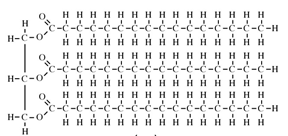 Butter: Solid, Unkinked http://www.indiana.edu/~oso/Fat/trans.html
Butter: Solid, Unkinked http://www.indiana.edu/~oso/Fat/trans.html
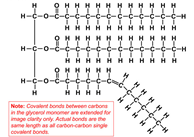 Vegetable Oil: Liquid, Kinked https://dlc.dcccd.edu/biology1-3/lipids
Vegetable Oil: Liquid, Kinked https://dlc.dcccd.edu/biology1-3/lipids
Most vegetable oils have kinks: double bonds that change the direction of the chain, keeping the oil molecules from stacking nicely and making them liquid at room temperature. To make them solid, you can add enough hydrogen to straighten out all those kinks, but that would result in a solid block of fat. Instead, food manufacturers add less hydrogen to do a partial hydrogenation, which straightens out only some of those kinks, resulting in a consistently spreadable product, or a PHO.
Unfortunately, in real life nothing is perfect, and in practice, chemical partial hydrogenation turns some of an oil’s double bonds from “cis” to “trans,” which are different molecular formations. You may have heard of trans fatty acids or “trans fats” before; these are PHOs with slightly crooked double bonds.
Double bond in the cis configuration:
Regulation and Industry
These trans fats have been correlated with increased LDL cholesterol, which has in turn been correlated with heart disease, the leading cause of death in the US according to the Center for Disease Control (in the times before COVID-19, anyway). Once these correlations were discovered, food regulations could mandate an end to the use of trans fats (and PHOs by extension) to avoid a further public health crisis. The US Food and Drug Administration (FDA) finally began taking action in 2015, concluding that PHOs were no longer Generally Recognized as Safe (GRAS).
But then on June 17, 2015, Industry complained about the regulations. Some claimed that PHOs are safe as minor constituents in coloring and flavoring additives, baking spray, and pie pan linings. The Grocery Manufacturers Association (GMA) cited two studies that relied on a model of animal metabolism… even though human data were available. It argued that trans-fat exposure against mortality risk should be modeled on an S-shaped curve as opposed to a linear curve, so that at low concentrations there would be almost no health effect. Unfortunately, these studies had poor-quality data at low exposure rates, and in some cases counted data twice. The FDA decided that the GMA finding — that PHOs are not necessarily bad for you at low levels — was unsupported. After failing to provide an environmental review, and given several other technical deficiencies, the FDA decided that PHOs as minor additives will still be banned and the petition was denied in its entirety.
However, the FDA did give the GMA an extension to figure out what could serve as a replacement for minor constituent PHOs. That extension expired on June 18, 2019, the last day it was legal to purposefully add PHOs into any foodstuff made in the US. Manufacturers and retailers then had six months to get products with PHOs as a major constituent through the supply chain, but by now, those products should mostly be gone from shelves. Since Jan 1, 2020, those products can no longer be sold, though minor additive- containing products may legally remain on the US shelves until 2021.
Alternative Technologies
Fortunately for food manufacturers, there are two primary alternatives that give us most of the benefits of partial hydrogenation without the health risks.
Fractional distillation: Natural oils are a mixture of different molecules with different melting points. You can separate these molecules by boiling off the mixture bit by bit (since the molecules will boil off at different temperatures, in a similar order to their freezing points).Then you can tailor your mix of oils and fats so in the aggregate they are a mix of solid and liquid around room temperature. Combine that mix with a small amount of surfactant to keep them from re-separating, and you’ll have a healthier replacement for PHOs.
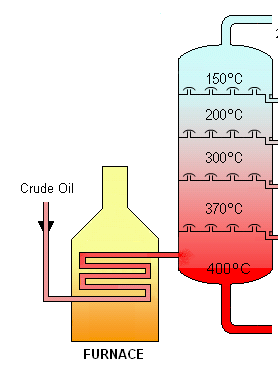 Fractional distillation, so you can separate the oils by boiling point, https://en.wikipedia.org/wiki/Fractional_distillation
Fractional distillation, so you can separate the oils by boiling point, https://en.wikipedia.org/wiki/Fractional_distillation
Interesterification: Alternatively, if the starting oil has lots of unsaturated fatty acids on one molecule, one can spread them more evenly amongst oil mixtures, so that fewer of the molecules are perfectly flat, and fewer are completely kinked. This will reduce the differences between the freezing points of the oil constituents, so they’ll be easier to keep from separating.
In renewable diesels, this same interesterification of vegetable oils with methyl acetate, a relatively small molecule, shrinks the average size of the molecules and decreases its viscosity, allowing it to be used in a conventional diesel engine.
 Redistributing the double bonds (kinks) more evenly through the molecules, https://en.wikipedia.org/wiki/Interesterified_fat
Redistributing the double bonds (kinks) more evenly through the molecules, https://en.wikipedia.org/wiki/Interesterified_fat
Industry on Board
These regulations have been phased in over time; thus far we’ve seen no major hiccups in the removal of major constituent PHOs from the food supply chain, and this regulation has helped spur a number of new PHO substitutes without trans fats. These additives tend to be tailored to their use while reducing the LDL levels associated with conventional PHOs. In the long term, we could see a reduction in heart attacks and strokes in the US.
This is an example of regulation encouraging industry to adopt new technologies for the greater good. These are innovation opportunities for food chemical manufacturers, and the industrial agricultural companies that supply the ingredients they need. In the long term, as potential health results are realized across the population, we’ll also observe if/how buttery spread capital markets shift and consumer demands change. Which reminds us that regulation is one way to grease the wheels of invention.
###
Women in Insurance Leadership 2019
From Digital Insurance
By Sharon Goldman
For Sherry Huang, the path to becoming an actuary started at an on-campus interview after studying statistics as an undergraduate in Berkeley. These days, as Chief Actuary at New Energy Risk (NER), which helps insure technical risk for breakthrough technologies related to renewable energy projects, she continues to use and evaluate data creatively, by analyzing and pricing transactions of technical performance risk.

“The central theme of all my experiences has been developing data-driven strategies and building a modeling framework to capture patterns and all elements of risk,” she says. Huang built the techno-economic modeling platform the NER team relies on from scratch, coding it in Python herself, integrating it with cloud-based databases, and creating a leading-edge user interface that is flexible in its inputs and allows team members to quickly analyze client risk profiles. She credits an analytics team leader at a client site with helping her understand how to build an effective and passionate team.
The work at NER, an MGA affiliated with AXA XL, is exciting and rewarding, she explains, because the company uses insurance and reinsurance to help address pressing global challenges related to clean technology, in areas such as waste, energy and new battery chemistries. Many clients have technologies that turn waste into products (or “trash to cash”), while others work on innovative, lower-carbon energy storage products.
“Through our underwriting rigor and consistent risk evaluation framework, I help turn risk into opportunities and enable growth for both for our customers and for our insurance partners,” she says. “Together, we are building a more sustainable future.”
Day-to-day, Huang spends her time evaluating clients’ pilot plant performance data together with NER’s science/engineering team, understanding related project economics, market factors and regulations. “Ultimately, I make sure our risk model for each transaction is consistent, comprehensive and transparent, so our insurer and reinsurer partners can rely on the results to deploy their capital,” she explains.
This kind of innovation in the insurance space is bound to continue, she predicts, either based on new technologies or new creative policy coverages that address an existing protection gap.
“I see continuous support on the regulatory and private investment front which will allow more energy technology companies to grow,” she says. “I see the insurance industry continuing to focus on sustainability and closing the protection gap, making a real difference in the global economy in a meaningful way.”
Opportunities abound
Huang believes there’s a commitment to leveling the playing field for women and minorities in both the technology and insurance industries.
“More women leaders are willing to speak out and step up about issues such as pay inequality and the glass ceiling,” she says. “I see a trend of empowerment for women as well as minorities, by male and female leaders alike.”
There is a real recognition of a disproportionate percent of C-suite women leaders and women entrepreneurs and venture-capital investors participating in the start-up world, she adds, pointing to California’s move to require all publicly held corporations headquartered in California to have at least one women director on their board by the end of 2019, causing a shift in the gender balance in the corporate board rooms.
“I believe over time, everyone will recognize that diversity is a key to innovation and profitability, and hopefully we will have a statistically significant data set to prove it,” she says. “I also hope that I can inspire and empower others as my mentors have inspired me.
These lessons stay with me.”
##
